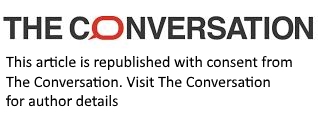Many parents – mostly mothers – lose family payments from the first dollar they earn. Here’s how we could fix it
- Written by Ana Gamarra Rondinel, Research Fellow, Faculty of Business and Economics, The University of Melbourne

From paid parental leave to expanded childcare and free kindergarten, Australia has made positive changes over the past two decades to better support families.
But for many parents juggling paid work and kids, research shows those gains are being undermined by a missing piece of the puzzle: fixing our outdated Family Tax Benefit payments.
Who are the biggest losers from leaving those rules unchanged for the past 25 years? Families with two working parents – especially mums trying to go back to paid work.
Ahead of next week’s national economic reform roundtable, the prime minister says he welcomes new ideas to boost productivity – and hopes “there’s some low hanging fruit out there” to act on soon, or to feed into next year’s budget.
A key place to start would be simplifying and updating family payments to better suit working families, support shared parental care and encourage paid work.
Payments affecting millions of Australians
Introduced by the Howard government in 2000, Family Tax Benefit part A and part B are the largest single government program of family assistance spending. Together, the payments are expected to cost close to A$20 billion this financial year.
As of March 2025, there were 1.27 million people receiving part A payments, and 996,005 receiving part B payments.
Around 2.43 million children were being supported by one or both of those payments.
But those payments are long overdue for an overhaul.
How two parents in paid work miss out now
The current rules particularly disadvantage families with two parents in paid work.
For instance, a two-earner couple, each earning $50,000 with a 5-year-old child, receives $1,896 in Family Tax Benefit part A – but no part B payment.
In contrast, a single-earner couple with the same income ($100,000 in total) receives $1,896 part A payment, $3,509 part B payment and up to $460 in part A and B supplements.
That’s $5,865 – almost $4,000 more. Yet both families bear the same costs of raising children.
Means testing and tightening over the past 25 years has led to less than half Australia’s families receiving any family payment support.
The system leads to high marginal effective tax rates on secondary earners, discouraging employment. When some parents return to paid work, most commonly a mother after having a child, they can start losing family payments from the first dollar they earn.
A simpler, fairer single payment
We propose combining those complex part A and part B payments – plus the part A supplements and part B supplements – into one simpler, single, per-child payment.
In two-parent families, under our proposal half the payment would be allocated to each parent. It would be tapered based on each parent’s individual income, so that only income by the parent over the income-free threshold would lead to reduced family payments.
Under our simplified proposal, each parent would have their own income-free threshold. Payments would taper once individual earnings exceed that threshold.
Single parents, with their dual role of primary carer and earner, would receive the full payment, with the same income-free threshold as parents in a couple.
This reform would support parents sharing care responsibilities, as well as giving people greater choice to participate more in paid work.
While our proposal has the potential to cost more than the current system – given it would increase payments to two parents in paid work – we could offset additional spending through higher taxes on high-income or high-wealth individuals.
Alternatively, it could be made budget neutral (not costing the federal government more) or positive (saving taxpayers’ money), depending on the payment rates and thresholds chosen.
Reducing taper rates on family payments by testing on individual income delivers higher net income for working families, which encourages greater workforce participation among second earners.
What’s the evidence this could help families?
There are more than 2 million Australian families of two parents with children. Of those, 1.1 million have one parent not doing paid work, or working part time – almost always the mother.
Gender gaps in earnings, employment and hours worked are driven almost entirely by mothers doing less paid work because of persistent gendered divisions in paid and unpaid work.
Research indicates the introduction of paid parental leave in Australia since 2011 has encouraged mothers to return to employment and increase their hours worked.
The current family tax benefits system is outdated and unfair for families navigating work and care responsibilities.
Simplifying family payments would encourage paid work, while aligning with past parental leave pay and childcare policy changes. This will make life easier for Australia’s working families and contribute to productivity to benefit us all.
Authors: Ana Gamarra Rondinel, Research Fellow, Faculty of Business and Economics, The University of Melbourne





